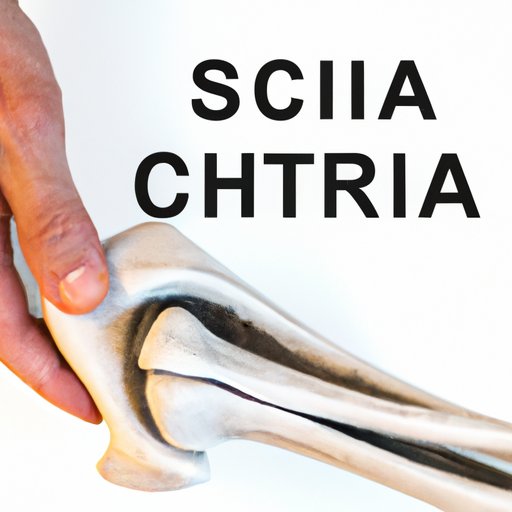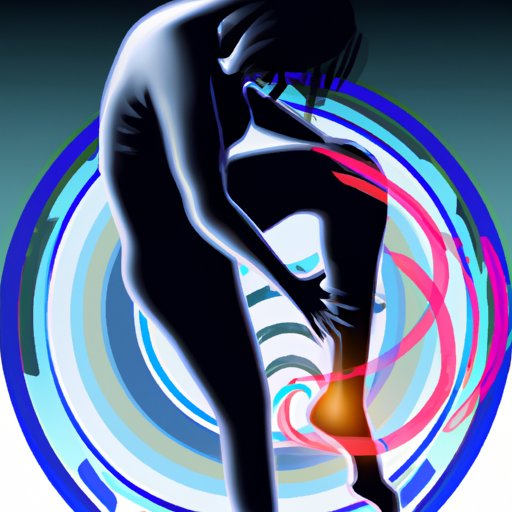
I. Introduction
Sciatica refers to pain that radiates along the path of the sciatic nerve, which runs from your lower back through your hips and buttocks and down each leg. The pain can be excruciating and debilitating, making it important to find ways to alleviate it. Natural remedies are a great option, both for their ability to soothe pain as well as for their lack of negative side effects.
II. 5 Natural Remedies for Sciatica Pain Relief
There are several natural remedies that have been shown to be effective in reducing sciatica pain.
Stretches to help ease pain
Stretching can help to alleviate the pain and tension in your lower back and hips that can contribute to sciatica. Try stretches like the seated spinal twist and the pigeon pose. Be sure to warm up before stretching and consult with your healthcare provider before starting any new exercise program.
Essential oils that have been shown to reduce inflammation and pain
Essential oils like peppermint and lavender can be effective in reducing inflammation and pain. Try adding them to a carrier oil, like coconut oil, and massaging the mixture onto the affected area.
Supplements that can aid in reducing nerve pain
Supplements like magnesium, vitamin B12, and alpha-lipoic acid can help to reduce nerve pain. Be sure to consult with your healthcare provider to determine the appropriate dosage and to make sure these supplements will not interfere with any medication you may be taking.
Importance of a healthy diet to reduce inflammation
Eating a diet high in anti-inflammatory foods like fruits, vegetables, and fatty fish can help to reduce inflammation in the body, which can in turn reduce sciatica pain.
Home remedies like heat and ice packs
Applying heat to the affected area can help to relax tense muscles and alleviate pain. Similarly, ice packs can help to reduce inflammation and numb pain. Use each for 20 minutes at a time, taking breaks in between.
III. The Role of Exercise in Managing Sciatica Pain
Exercise is important when it comes to managing sciatica pain.
Benefits of exercise for sciatica pain
Exercise helps to strengthen the muscles supporting your lower back and hips, reducing the risk of further injury and pain. It also releases endorphins, which can help to combat pain and improve mood.
Specific exercises that help to strengthen the muscles supporting your lower back and hips
Exercises like bridges, pelvic tilts, and clamshells can help to strengthen the muscles supporting your lower back and hips, reducing the risk of further injury and pain.
Tips on how to perform exercises safely
Be sure to start with gentle exercises and build slowly, giving your body time to adjust. Stop any exercise that causes pain. Focus on maintaining good form and consult with a healthcare professional or trainer if you have any concerns.

IV. How to Alleviate Sciatica Pain with Mindfulness Techniques
Mindfulness techniques like meditation and deep breathing can help to alleviate sciatica pain.
Introduction to mindfulness techniques
Mindfulness involves bringing your focus to the present moment and accepting your thoughts and feelings without judgment.
Explanation of how mindfulness can help in relieving stress that can contribute to sciatica pain
Stress can contribute to tension and inflammation in the body, exacerbating sciatica pain. By practicing mindfulness, you can reduce stress and provide relief from pain.
Tips on how to incorporate practices like meditation and deep breathing in daily life
Start with just a few minutes a day and gradually build up. Find a quiet space, sit comfortably, and focus on your breath. You can also try guided meditations or deep breathing exercises to help calm your mind and soothe your body.
V. Top 3 Trigger Points for Sciatica Pain Relief
Trigger points are tender spots in the body that, when stimulated, can provide relief from pain.
Explanation of trigger points
Trigger points refer to specific locations in the body that can be targeted to relieve pain.
Information on the most common trigger points for sciatica
The gluteus medius, piriformis, and lumbar spine are the most common trigger points for sciatica pain.
Tips on how to find and release trigger points
Use a foam roller or tennis ball to gently apply pressure to the trigger point, using your body weight to control the intensity. Hold for 30-60 seconds, or until you feel the pain start to dissipate.
VI. The Benefits of Chiropractic Care for Sciatica Pain
Chiropractic care can be an effective way to alleviate sciatica pain.
Introduction to chiropractic care
Chiropractic care involves adjustments to the spine and massage techniques to relieve tension and pain in the body.
Explanation of how spinal adjustments and massage methods can help alleviate sciatica pain
Spinal adjustments can help to ensure proper alignment of the spine, reducing pressure on the sciatic nerve. Massage techniques can help to relax tense muscles, further reducing pain and inflammation.
Importance of seeking professional help from a chiropractor
Chiropractic care should always be performed by a licensed professional. Consult with your healthcare provider to determine if chiropractic care is appropriate for your condition.
VII. Tools and Equipment for Managing Sciatica Pain at Home
There are several helpful gadgets and tools that can be used to manage sciatica pain at home.
Information on helpful gadgets for improving sciatica pain
Hot/cold gel packs, ergonomic pillows, and lumbar support cushions can be effective in reducing pain and improving posture.
Recommended hot/cold gel packs, ergonomic pillows, and lumbar support cushions
Consider options like the ThermiPaq Hot/Cold Pack, the Sleep Innovations Contour Memory Foam Pillow, and the LoveHome Memory Foam Lumbar Support Pillow.
Tips on how to use these gadgets properly
Be sure to follow the manufacturer’s instructions for use and consult with your healthcare provider if you have any concerns.
VIII. Conclusion
By incorporating natural remedies, exercise, mindfulness techniques, trigger point release, chiropractic care, and helpful tools and equipment, it is possible to alleviate sciatica pain. It’s important to live a healthy lifestyle, consult with healthcare professionals, and take care of your body to ensure lasting relief.




